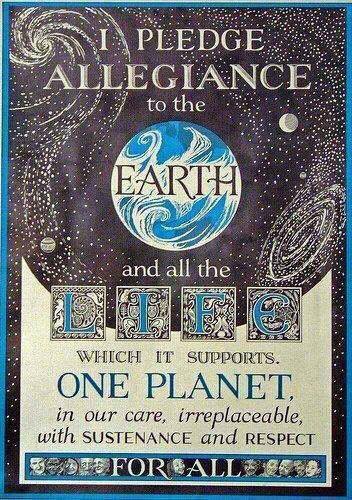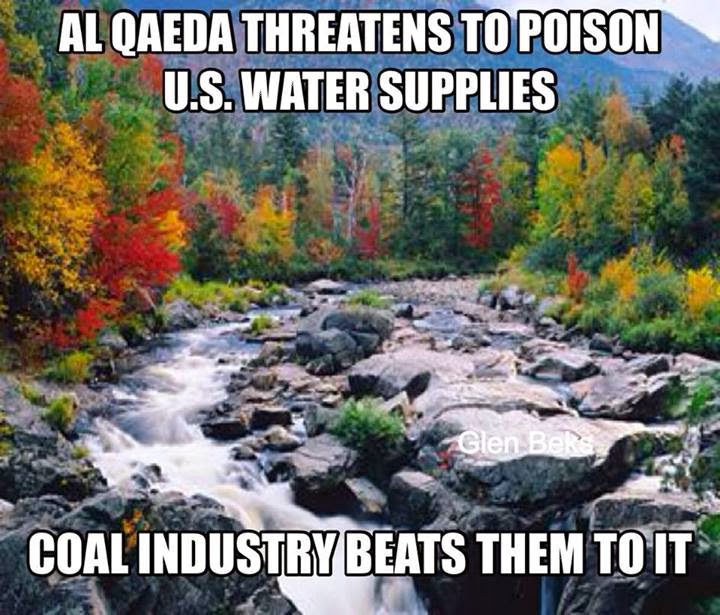Depleted
uranium aerosols will permanently contaminate vast regions and slowly
destroy the genetic future of populations living in those regions.
Depleted uranium: an overview of its properties and health effects
Mar 2002
For some years after the Gulf War, many US and European veterans
deployed in the region during the war complained of vague incapacitating
symptoms that have been termed ‘Gulf War syndrome’ [5,6]. The US
Department of Defense treated this illness as ‘post-traumatic stress
disorder’ and advised military doctors to treat it with muscle relaxants
and sleeping pills while ordering a mental illness assessment [1].
Arguments about the issue have continued for years, some authors
describing it as a myth invented by the media [7], others documenting
the symptoms reported by the veterans. These symptoms were multiple,
consisting mainly of chronic fatigue, headache, muscle and joint pain,
sleep disturbances, bladder dysfunction, sweating disturbances, skin
manifestations, menstrual disorders, as well as neurological,
psychological, respiratory, gastrointestinal and cardiac symptoms
[5,6,8]. Over time, the focus shifted to more serious health risks and a
number of dangerous conditions became linked to depleted uranium
exposure. These included cancers of different types, renal diseases, as
well as congenital anomalies and perinatal deaths among the neonates of
veterans [3,9–14]. These health concerns triggered an explosion of
interest in the subject as the affected veterans started to campaign for
more information about the relationship between their illnesses and
exposure to depleted uranium.
If the Gulf War veterans who were temporarily stationed in the region
were indeed victims of depleted uranium, what could have been the impact
of this substance on the health of the residents of the region and
surrounding countries? Most studies from Iraq have concentrated on the
impact of the United Nations’ sanctions against Iraq on nutritional
deficiencies and on children’s health. A few studies in the Gulf
countries have noted an increased incidence of abortion and perinatal
and infant mortality since the Gulf War [15–17], but no adequate
in-depth research has been performed on the link between the war and
serious health conditions. Many issues concerning the effect of depleted
uranium on the health of the residents of the war countries and the
surrounding regions remain unexplored.
This review of depleted uranium—its origin, properties, uses and impact
on the human environment and health—aims to trigger further research on
the subject. Internet and MEDLINE searches were performed to extract
information on depleted uranium and its health effects. Information was
mainly taken from published research on depleted uranium in general and
from the Gulf War in particular......The primary stochastic effect
associated with radiation exposure is cancer.
.....Exposure to radiation can also affect the reproductive system,
causing infertility or damage to the father’s sperm or mother’s egg.
Genetic damage is possible, leading to spontaneous abortion, premature
death or congenital anomalies. Some forms of genetic damage are not seen
in the first or second generations but only later after several
generations have passed.
Another danger of exposure to low-dose radiation is biological damage in
the form of monocyte depletion, leading to iron deficiency anaemia and
a depressed cellular immune system. Radiation also deforms red blood
cells, inhibiting their passage into the tiny capillaries and depriving
the muscles and brain of adequate oxygen and nutrients. This can lead
to impairment of many organs especially the kidneys, liver, lungs and
cardiovascular and haematopoietic systems.
Radiation can cause disorders of protein and carbohydrate metabolism,
leading to symptoms ranging from severe headache to brain dysfunction.
Mental retardation owing to brain damage of the fetus has also been
described as a result of radiation exposure in the womb during the
critical period when the child’s brain is being formed.
The chemical toxicity of depleted uranium results from its interaction
with the biochemical processes of the human body. Chemically, depleted
uranium damages kidney function in humans. The proximal tubules are the
main site of potential damage. The types of damage that have been
observed are nodular changes to the surface of the kidney, lesions to
the tubular epithelium and increased levels of glucose and protein in
the urine.
Conclusion
If depleted uranium were indeed used in the Gulf War, it will certainly
have constituted an enormous health hazard not only to the US and
European veterans deployed in the region during the war but also to the
residents of the war countries and surrounding areas. The extent of the
region affected has not been determined and the long-term dangers
remain unidentified.
The Birth Defects of Fallujah
Jan 8 2012
|
 |
| America's Planned Nuclear Attack on Libya
- by Prof. Michel Chossudovsky - 2011-03-30 |
Thinking the Unthinkable. The Pentagon's Plan to Nuke Libya
|
 |
|
| Nuclear Apocalypse in Japan
- by Keith Harmon Snow - 2011-03-18
|
Humanity now faces a deadly serious challenge coming out of Japan -- the epicenter of radiation.
|
 |
|
|
|
| Missing Nukes: Treason of the Highest Order
- by Mahdi Darius Nazemroaya - 2007-10-29
|
Unauthorized removal of nuclear weapons would be virtually impossible to accomplish unless the chain of command were bypassed.
|
|
Energy Efficiency : Uncounted Costs
Observer
investigation uncovers link between dramatic rise in birth defects in
Punjab and pollution from coal-fired power stations
Health workers in
the Punjabi cities of Bathinda and Faridkot knew something was terribly
wrong when they saw a sharp increase in the number of birth defects,
physical and mental abnormalities, and cancers. They suspected that
children were being slowly poisoned.
But it was only when a
visiting scientist arranged for tests to be carried out at a German
laboratory that the true nature of their plight became clear. The
results were unequivocal. The children had massive levels of uranium in
their bodies, in one case more than 60 times the maximum safe limit.
The
results were both momentous and mysterious. Uranium occurs naturally
throughout the world, but is normally only present in low background
levels which pose no threat to human health. There was no obvious source
in the Punjab that could account for such high levels of contamination.
And
if a few hundred children – spread over a large area – were
contaminated, how many thousands more might also be affected? Those are
questions the Indian authorities appear determined not to answer. Staff
at the clinics say they were visited and threatened with closure if they
spoke out. The South African scientist whose curiosity exposed the
scandal says she has been warned by the authorities that she may not be
allowed back into the country.
But an Observer investigation has
now uncovered disturbing evidence to suggest a link between the
contamination and the region's coal-fired power stations. It is already
known that the fine fly ash produced when coal is burned contains
concentrated levels of uranium and a new report published by Russia's
leading nuclear research institution warns of an increased radiation
hazard to people living near coal-fired thermal power stations.
The
test results for children born and living in areas around the state's
power stations show high levels of uranium in their bodies. Tests on
ground water show that levels of uranium around the plants are up to 15
times the World Health Organisation's maximum safe limits. Tests also
show that it extends across large parts of the state, which is home to
24 million people.
The findings have implications not only for
the rest of India – Punjab produces two-thirds of the wheat in the
country's central reserves and 40% of its rice – but for many other
countries planning to build new power plants, including China, Russia,
India, Germany and the US. In Britain, there are plans for a coal-fired
station at the Kingsnorth facility in Kent.
The victims are being
treated at the Baba Farid centres for special children in Bathinda –
where there are two coal-fired thermal plants – and in nearby Faridkot.
It was staff at those clinics who first voiced concerns about the
increasing numbers of admissions involving severely handicapped
children. They were being born with hydrocephaly, microcephaly, cerebral
palsy, Down's syndrome and other complications. Several have already
died.
Dr Pritpal Singh, who runs the Faridkot clinic, said the
numbers of children affected by the pollution had risen dramatically in
the past six or seven years. But he added that the Indian authorities
appeared determined to bury the scandal. "They can't just detoxify these
kids, they have to detoxify the whole Punjab. That is the reason for
their reluctance," he said. "They threatened us and said if we didn't
stop commenting on what's happening, they would close our clinic.
Poisoning of the people in the Navajo and Great Sioux Nations has been
going on for decades and has had serious effects on their health. Even
today, it is unknown what the full effects are and what the impact is on
the rest of the nation because the contaminated air and water are not
limited by borders. Most Americans are unaware of the story of uranium
mining on tribal lands because it is a difficult story to accept. It is a
story that includes the long history of human rights abuses by the US
against native Indians and recognition of the full costs of nuclear
energy – two stories the government and big energy have suppressed.
NukeFree.Org
The Uranium & Weapons Connection
Despite
the nuclear energy industry's well-funded efforts to convince the
public otherwise, uranium fuel for atomic power plants is in limited
supply. Like coal, oil and gas, it will soon run out, leaving scores of giant reactors useless and abandoned.
Also
like fossil fuels, the impact of mining and processing fuel for nuclear
power plants involves huge impacts on humans and the environment. With
mines mostly in Australia, the American west, Canada, and central and
southern Africa, atomic power has created huge ecological crises whose
solutions are a long way off and are already proving to be exceedingly
expensive.
When uranium ore is gouged out the ground, it emits
radon gas that fills mine shafts with deadly fumes. Uranium miners
throughout the world have historically suffered from abnormally high
lung cancer rates. They also die in the same kinds of accidents that
kill coal and other ore miners.
When the raw uranium is brought
to the surface, it's milled into fine sands called tailings. Billions of
tons of these waste granules are dumped near milling plants throughout
the world, emitting huge quantities of radioactive radon gas, a
well-known cause of lung cancer. Radon emissions from mills in Colorado
and New Mexico have been tracked as far away as New York City and
Washington DC. They are the number one source of increased background
radiation from the atomic fuel cycle.
Alongside the mills are
huge ponds of acid solutions used to separate the usable uranium
isotopes from the waste. These ponds are extremely lethal to human
beings and poisonous to the environment. Periodically the dams holding
them back break, wrecking ghastly havoc on the regions downstream.
The
percentage of uranium usable for fuel is less than 5% of the total ore
dug out of the ground. Those rare isotopes must then be enriched in
giant factories that are extremely inefficient. The dominant process
actually coverts the solid ore into a gas (uranium hexafluoride), and
then back to solids. The plants consume huge quantities of energy, most
of it now generated by fossil fuels.
The biggest enrichment plant
in the US, at Paducah, Kentucky, is powered by two huge coal plants.
Though the nuke reactor industry claims to generate about 18% of the
nation's electricity, some 3% of the nation's electricity is used to
refine uranium for those power plants.
At every stage of the
mining, milling and enrichment process, significant quantities of fossil
fuel-generated greenhouse gases are poured into the atmosphere. The
idea that the nuclear fuel cycle “creates no greenhouse gas emissions”
is a deliberately and dangerously misleading myth.
The spent fuel
rods from atomic reactors remain intensely radioactive for centuries,
and are among the most lethal industrial objects ever created by human
beings. Standing within a few feet of a single rod can result in death
in less than five minutes.
In recent years the nuke power
industry has tried to revive the myth of reprocessing, by which spent
fuel can be re-formed into usable fuel. The technology has been tried in
a number of nations, including the US. But it is prohibitively
expensive, and makes no economic sense. It also generates substantial
new quantities of intensely radioactive waste for which no long-term
disposal methods have been discovered.
Reprocessing also creates
large quantities of weapons-grade plutonium, the material used to build
the Bomb that destroyed Nagasaki. Making more plutonium under any
circumstances threatens the world with the production of still more
atomic weapons. India, Pakistan, South Africa and Israel, along with
numerous other countries, are known to have fashioned nuclear weapons
from uranium extracted from ostensibly civilian nuclear power programs.
Recently the United States has threatened war with Iran on the
presumption that the civilian enrichment process would give them the
fissionable materials needed to build their own atomic weapons.
From
start to finish, from mining, milling, enrichment, fissioning and waste
disposal to the failed re-use of radioactive fuel, the nuclear fuel
cycle has proven catastrophic for human and ecological health, for the
economy, and for the proliferation of atomic weapons.
But no radioactive windmill wastes will ever be used to destroy a city. Solar panels will not emit cancer-causing radon gas.
Blighted Homeland (Los Angeles Times four-part series)
SEPTEMBER 8, 2009 Wall Street Journal The next generation of nuclear
reactors is on its way, and supporters say they will be safer, cheaper
and more efficient than current plants. Here's a look at ... read more
by Michael Mariotte More bad news for those who still believe that
we're about to enter a nuclear power renaissance, rather than the
full-scale nuclear-powered retreat from those halcyon days of ... read more
Lawsuit may halt reactor construction By Walter C. Jones | Morris
News Service | Story updated at 8:50 pm on 9/5/2009 ATLANTA - The
question of a controversial law's constitutionality could halt ... read more
Nuclear History Blog
Indigenous
peoples from around the world, victims of uranium mining, nuclear
testing, and nuclear dumping, issued a global ban on uranium mining on
native lands.
The
declaration, signed during the Indigenous World Uranium Summit, held
Nov. 30-Dec. 2, 2006 on the Navajo Nation in Window Rock, Arizona,
brought together Australian aboriginals and villagers from India and
Africa. Pacific islanders joined with indigenous peoples from the
Americas to take action and halt the cancer, birth defects, and death
from uranium and nuclear industries on native lands.
Villagers
from India testified to the alarming number of babies who die before
they are born or are born with serious birth defects, and of the high
rates of cancer that are claiming the lives of those who live near the
uranium mines.
| Nuclear
Free Future Award recipients and presenters: Standing, from left to
right: Phil Harrison, Gordon Edwards, Paul Robinson, Willem Malten,
Manny Pino, Heike Hoedt, Feng Congde, Esther Yazzie-Lewis, Chris Shuey,
Ed Grothus, Claus Biegert, Jill Momaday-Gray. Kneeling and sitting in
front, from left to right: Wolfgang Scheffler, Robert Del Tredici, Sofia
Martinez. |
Australia
Aboriginal Rebecca Bear-Wingfield, stolen as an infant and now an
activist, told of the death threats for those who oppose the expansion
of uranium mining in South Australia. Corporations have attempted to buy
Aboriginals' approval for new uranium mining projects on native lands.
From
northern China came the voice of Sun Xiaodi, a whistleblower who has
exposed massive unregulated uranium contamination. Xiaodi is now under
house arrest in Gansu Province after he was "disappeared" and imprisoned
in 2004-2005.
Xiaodi,
along with five other anti-nuclear activists, was awarded the
Nuclear-Free Future Award in 2006. The awards highlighted not only the
personal and collective achievements of the recipients but also the
international collaboration that has grown within the movement. Those
honored came from several continents.
Organizing International Resistance to Uranium Mining: From Salzburg to Window Rock
The
Navajo Nation provides a fitting backdrop for discussions of the
dangers of uranium mining. The history of uranium mining on these native
lands goes back decades to when Navajo workers were sent to their
deaths in Cold War uranium mines, unknowingly aiding the production of
the world's first weapons of mass destruction.
Navajo
Nation President Joe Shirley Jr. remarked, "As a result, radiation
exposure has cost the Navajo Nation the accumulated wisdom, knowledge,
stories, songs, and ceremonies--to say nothing of the lives--of hundreds
of our people. Now, aged Navajo uranium miners and their families
continue to fight the Cold War in their doctors' offices as they try to
understand how the invisible killer of radiation exposure left them with
many forms of cancer and other illnesses decades after leaving the
uranium mines."
The
tragedy spurred a growing resistance to the mines, and the Navajo
Nation today is at the head of an international movement. In one of the
movement's greatest achievements, in 2005 the tribe passed the Dineh
Natural Resources Protection Act banning uranium mining on Navajo lands.
Norman Brown, a Navajo and member of the organization Dineh Bidzill
Coalition that co-organized the Summit, said, "The heart of this
movement is here--we are at the center of this movement today."
Major challenges
For years uranium mining was shrouded in secrecy as part of the Cold War and its victims were isolated.
Compensation
has been hard to win in the courts and although recognized in the 1990
Radiation Exposure Compensation Act for Navajo Uranium Miners, only a
small percentage of mining families have received their due.
A
general lack of political power in indigenous communities makes them
easy marks for dangerous uranium mining and dumping projects.
The rising price of uranium has caused renewed pressure on indigenous lands. |
Like
Navajos, Pueblos were also victims of the Cold War. As the truth
emerged, Navajo and Pueblos in nearby New Mexico at first believed they
were the lone victims of this death march. Uranium mining was enveloped
in secrecy and carried out surreptitiously under the guise of national
security, shielding it from public scrutiny and isolating its victims.
But
as they became more vocal in their demands, the peoples of the U.S.
Southwest soon met indigenous peoples from other parts of the world who
shared similar histories as victims of uranium mining, nuclear testing,
and nuclear waste dumps. Indignation grew as they realized that American
Indian uranium miners in both the United States and Canada had been
sent to their deaths to work in the uranium mines long after scientists
warned of the health hazards of radon gas and radiation.
The
first international meeting to exchange experiences and begin to
develop demands took place at the World Uranium Hearing in Salzburg,
Austria, in 1992, where activists began their struggle to halt uranium
mining on indigenous land. In the words of the organizers, the Navajo
meeting was held to follow up on that experience, develop coordinated
actions and issue an international and energetic call for a halt to
uranium mining on native lands throughout the world.
More
than 300 participants from 14 countries participated in the event, with
speeches covering all aspects of uranium mining, international
activists efforts to halt the mining, and the devastating health
effects.
Their message to the world: "Leave the uranium in the ground."
Global Threats to Local Life: Defending Communities
At
the Navajo summit, Manuel Pino, Acoma Pueblo from New Mexico and
college professor, recalled that in Salzburg, Dene from Canada described
the cancer that resulted from working in uranium mines without
protective clothing. Mining in Canada and the United States was often
carried out by the same corporations.
"As
we went to Salzburg, we realized that many of our people were sick and
dying," Pino said. He pointed out that Laguna Pueblo's Paguate village
is only 2,000 feet from the largest open-pit uranium mine in North
America , the Jackpile Mine. Pino said radioactive particles have been
found in the animals, water, air, and in the bodies of people of the
Pueblos.
Residents
of the Laguna Pueblo waged a pitched battle for reclamation of the
Jackpile Mine. Originally owned by Anaconda, and now owned by Atlantic
Richfield Company (ARCO) the lease owners simply walked away when mining
stopped, leaving radioactive waste strewn and the earth torn apart.
Ultimately, reclamation efforts began, but it was too late for the many
Pueblos dying or already dead from cancer.
Pino
noted that Acoma Pueblo members live downwind and downstream from the
Grants, New Mexico, mineral belt--a 60-mile stretch where uranium was
produced from 1948 through the 1990s. He claimed that most of the
uranium mined on Indian lands by the United States Department of Defense
was used in the production of weapons of mass destruction.
According
to Pino, recent efforts endorsed by the United States and other nations
to stall passage of the Declaration on the Rights of Indigenous Peoples
in the United Nations stem from material interests. He stated that
indigenous peoples have vast mineral resources beneath the surface of
their lands, along with timber, water and other natural resources, and
these nations view the exercise of indigenous rights as a threat to
corporate access to and exploitation of this natural wealth.
"Our permanent sovereignty over our resources is a threat to the nation states of the world," Pino told the uranium summit.
He
added that here on the Navajo Nation in the past the tribe has entered
into leases that favor the corporations, often without being duly
informed of the risks. In the Pueblos, he said, the people were never
told of the harm that would result from the radioactive dust settling on
their traditional drying fruit and drying meat.
Nation
states, he said, do not realize that Indigenous Peoples take their
responsibility as caretakers of Mother Earth seriously and will not back
down. Recalling the words of Sitting Bull, Pino urged the people to
"come together to form a fist to protect Mother Earth."
Carletta
Tilousi, Havasupai from the Grand Canyon in Arizona, attended both
uranium summits, in Salzburg and Window Rock. Tilousi praised Havasupai
tribal leaders for passing a ban on uranium mining in Havasupai
territory in the Grand Canyon and placing the ban in the Havasupai
Tribal Constitution.
Still,
with the rising price of uranium and new threats to Indian lands,
Tilousi said tribes must be vigilant to support one another in the
protection of Mother Earth.
 www.guardian.co.uk/world/2009/aug/30/india-punjab-children-u... www.guardian.co.uk/world/2009/aug/30/india-punjab-children-u...
sent by protect_democracy since 10 days 9 hours 21 minutes, published about 9 days 17 hours 7 minutes
Health
workers in the Punjabi cities of Bathinda and Faridkot knew something
was terribly wrong when they saw a sharp increase in the number of birth
defects, physical and mental abnormalities, and cancers. They suspected
that children were being slowly poisoned. But it was only when a
visiting scientist arranged for tests to be carried out at a German
laboratory that the true nature of their plight became clear. The
results were unequivocal. The children had massive levels of uranium in
their bodies, in one case more than 60 times the maximum safe limit.
 americas.irc-online.org/am/6386 americas.irc-online.org/am/6386
sent by thedazeahead since 11 days 13 hours 3 minutes, published about 11 days 2 hours 57 minutes
".
. .Havasupai elders gathered on sacred Red Butte and listened to the
legacy of uranium mining on Indian lands. They heard directly from the
victims of the trail of death and cancer left behind by uranium mining
corporations that were never held responsible on Pueblo and Navajo lands
in the Southwest United States. They also listened to the promise of
solidarity from the hundreds who gathered here to stand with them:
Navajos from Big Mountain, Hualapai, Hopi, Kaibab Paiute, Paiute,
Aztecs, and other American Indians from throughout the Americas."
 www.nytimes.com/2009/07/21/opinion/21tue3.html?_r=1 www.nytimes.com/2009/07/21/opinion/21tue3.html?_r=1
sent by nasrudin since 50 days 10 hours 32 minutes
It’s
hard to believe that the 1872 mining law is still with us. Signed by
Ulysses S. Grant four years before the invention of the telephone, the
law sets the rules for mining hardrock minerals like gold and copper.
Useful in the days of westward expansion, it is a disaster now. It
demands no royalties from the mining companies and provides minimal
environmental protections. Its legacy, if it can be called that, is a
battered landscape of abandoned mines and poisoned streams. Republican
and Democratic presidents alike have urged Congress to reform the law.
Yet it survives, thanks largely to Congressional inertia and friends in
high places. At the moment, that friend is Harry Reid, the Senate
majority leader who resists reform because mining is big business in his
home state of Nevada.
|















No comments:
Post a Comment